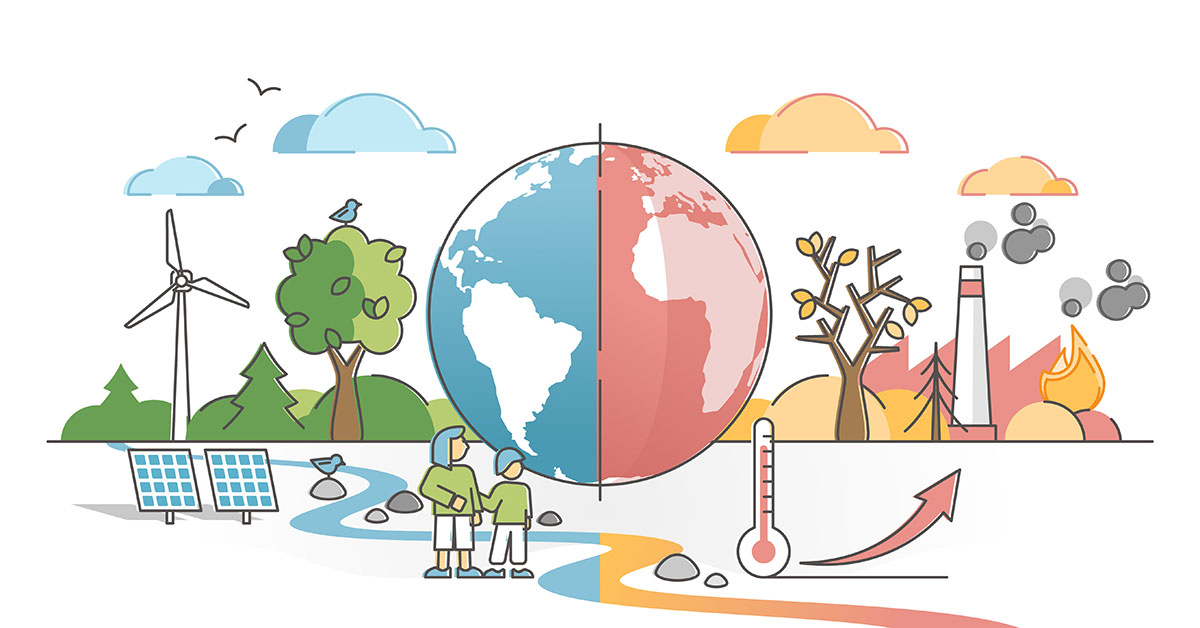As the CEO of QuickMed, I’ve witnessed firsthand the intricate ways in which climate change impacts the health of rural communities. From increasing rates of respiratory diseases due to poor air quality to changes in the spread of infectious diseases, the challenges are as significant as they are complex. In this blog, I aim to shed light on these challenges and explore viable solutions that can help mitigate the effects of climate change on rural health.
Understanding the Challenges
Climate change affects rural health through a variety of environmental shifts, each bringing its own set of health risks. Let’s break down some of these challenges:
Increased Air Pollution
One of the most immediate effects of climate change is the increase in air pollutants, including allergens and particulates from wildfires and agricultural dust. This exacerbates respiratory conditions like asthma, bronchitis, and other chronic respiratory diseases, which are increasingly prevalent in rural populations where healthcare resources are already stretched thin.
Shifts in Vector-Borne Diseases
Warmer temperatures and altered rainfall patterns lead to changes in the habitats of insects that transmit diseases, such as mosquitoes and ticks. This results in the expanded range and season of diseases like Lyme disease and West Nile virus, posing new health risks to communities previously unexposed to these threats.
Extreme Weather Events
Rural areas are particularly vulnerable to extreme weather events such as floods, droughts, and heatwaves. These events can have direct health impacts like heatstroke and injuries, and indirect effects such as waterborne diseases and mental health strains due to displacement and loss.
Proposing Solutions
Addressing the health impacts of climate change in rural areas requires a multi-faceted approach, involving direct healthcare interventions and broader community and environmental strategies.
Enhancing Healthcare Infrastructure
To prepare for the increasing healthcare demands due to climate change, it is crucial to strengthen rural healthcare infrastructure. This includes increasing the availability of healthcare professionals trained to deal with climate-related health issues and enhancing telehealth services to reach remote patients during extreme weather when travel becomes impractical.
Monitoring and Surveillance
Improving the monitoring and surveillance of climate-related health issues can lead to better preparedness and response. This involves tracking changes in disease patterns and pollutant levels to identify and mitigate emerging health threats quickly. At QuickMed, we’ve initiated programs to equip local healthcare providers with the tools necessary for effective surveillance and response.
Community Education and Engagement
Educating the community about the risks associated with climate change and ways to mitigate these risks is paramount. This includes information on how to manage chronic diseases during poor air quality days, precautions to avoid vector-borne diseases, and how to stay safe during extreme weather events. Engaging the community through workshops and training sessions can empower residents to take an active role in their health management and resilience planning.
Policy Advocacy
Advocating for policies that address the root causes of climate change and its effects on health is another critical step. This includes supporting sustainable agricultural practices, promoting renewable energy, and ensuring that health and safety regulations are adapted to meet the challenges posed by a changing climate.
Building Partnerships
Collaborations between healthcare providers, environmental organizations, community leaders, and government agencies are essential to tackle the multifaceted issues at the intersection of climate change and health. These partnerships can facilitate integrated approaches to health surveillance, emergency preparedness, and community resilience initiatives.
The Role of Healthcare Leaders
As healthcare leaders, we have a responsibility not only to adapt our practices to respond to the health impacts of climate change but also to lead efforts in sustainability and preventive health care. At QuickMed, we are committed to this dual approach—adapting our services to meet changing health needs and advocating for environmental and policy changes that protect our communities.
Conclusion
The challenges climate change poses to rural health are daunting but not insurmountable. With proactive planning, community engagement, and strong leadership, we can mitigate these effects and ensure that rural communities remain healthy and resilient. The journey is undoubtedly complex, but as we continue to forge ahead with innovative solutions and collaborative efforts, we move closer to a future where health and environmental sustainability go hand in hand.


